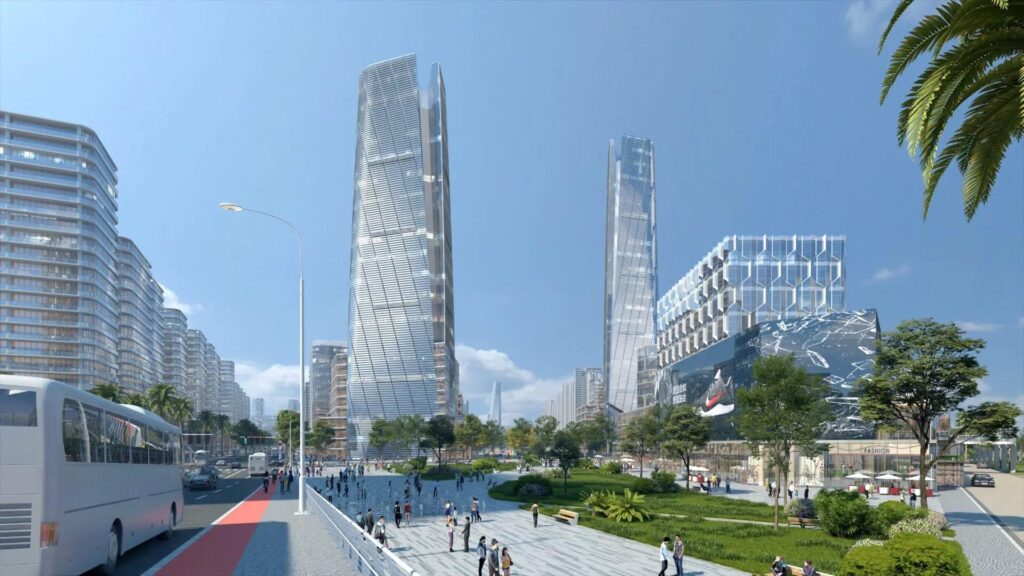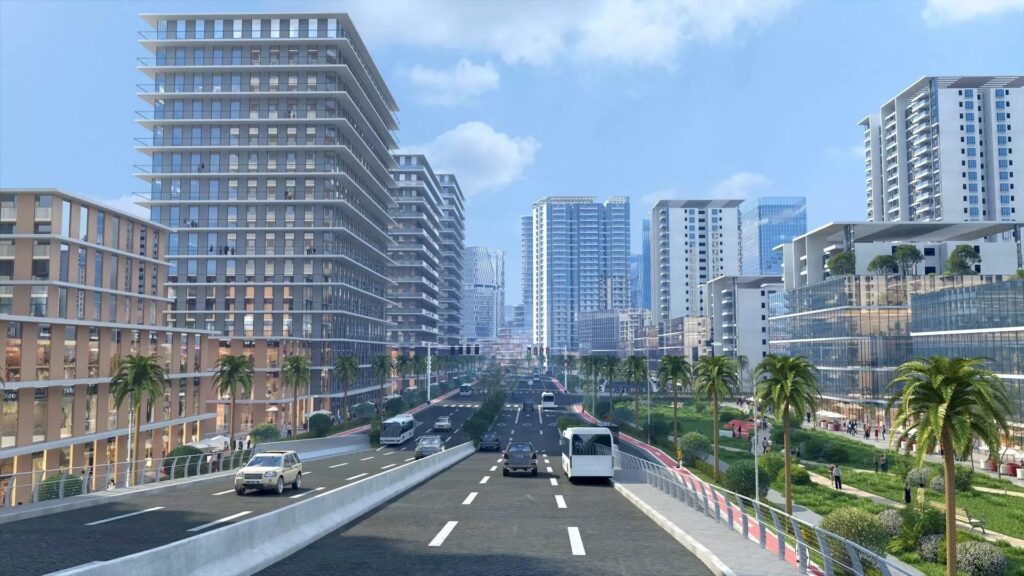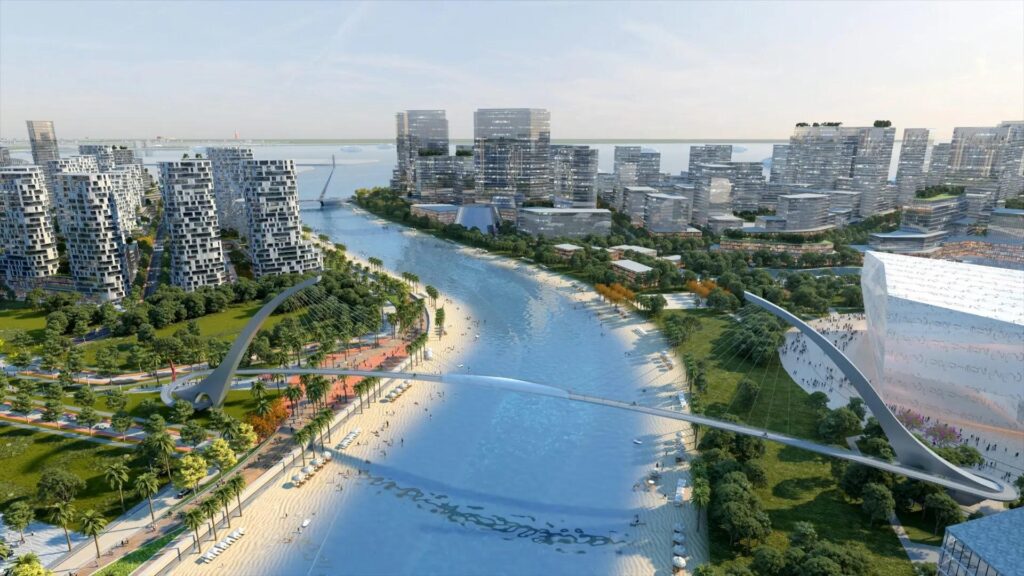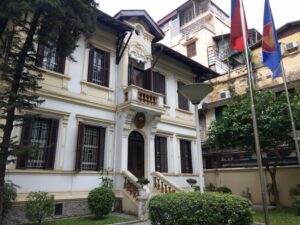Neil Santos, a social evolution enthusiast, was born and raised in Pasay City. He is now a struggling young entrepreneur wanting to create a good future for himself and contribute meaningful progress to the society and economy.

With the construction of the Pasay City Harbor Reclamation project, popularly known as the Pasay 265 or the “Manhattan of Manila Bay,” Neil has been totally in awe with this project considered as one of the legacy projects under the President Ferdinand Marcos Jr. government.

“This is a dream come. Imagine, a city that rivals the best in the world, right here in our very own Pasay,” Neil beamed with excitement.

Pasay citizen, like Neils will soon reap the benefits of land expansion and reclamation efforts in their very own backyard.
Under the Philippine Reclamation Authority and with the help of Pasay local government units, Pasay265, or the Pasay City Harbor Reclamation project, is slated to officially begin in 2026 after Pres. Marcos’ greenlighting of the project, and will be called the “Manhattan of Manila Bay.” The project is a joint venture with the Pasay Harbor City Consortium to build 265 hectares of land in the coastal area of Pasay City, hence the name.
As of July 19, 2022, about 117 hectares of land has been reclaimed with the entire project, including its developments and amenities are expected to be completed in 2028 before the term of President Marcos ends.
This is in line with Pres. Ferdinand Marcos Jr.’s Bagong Pilipinas project, aiming to increase infrastructure with the ultimate goal of benefiting the Filipino people. After all, reclamation projects may be one of the best ways to develop unused land, creating new opportunities to uplift sectors that are most in need of growth. .
Citing the commendable success of past reclamation projects in the area such as the CCP Complex and the Mall of Asia areas, Pasay 265 is expected to become a center of livelihood and new opportunities, as well as to ease congestion within Metro Manila.
During his SONA in 2023, Pres. Marcos asserted, “The underlying logic for infrastructure is economic efficiency. We are opening up all gateways to mobilize goods and services at less cost and less time, and ultimately to drive our economy forward.”
In fact, citizens of Pasay can soon expect to see long-term benefits from these projects. The Pasay City government expects to see around P2.5 trillion in revenue and the creation of a million jobs from ongoing reclamation projects in the next 35 years, taking advantage of a current boom in demand for real estate in Metro Manila.
Pasay is an ideal location for new infrastructure, despite being one of the smallest cities in Metro Manila in terms of land area, its potential for expansion lies in sea reclamation projects thanks to the city’s extensive coastal areas. With other urban centers in Manila being landlocked and unable to expand, Pasay is one of the few cities able to satisfy the demand for rapid commercial and residential growth.
In partnership with Dutch company Royal Boskalis Westminster N.V., around 117 hectares of land have been reclaimed so far, with horizontal developments targeted to be completed in 2028. Two islands, around 210 hectares and 55 hectares respectively, will be built along the coast of Manila Bay near the current SM Mall of Asia complex. Pasay 265 is expected to bring about an economic boost to Pasay and its residents. City administrator Peter Manzano said, “The projects are projected to create economic multipliers and generate millions of jobs and billions of revenues,” adding that one of the project’s highlights is its use of blue and green infrastructure, featuring green parks, mini forests, and mangrove corridors, all in an effort to reduce environmental impact.
Pasay 265 will construct seven unique districts: the Gateway, Channel East, Channel West, Central Park, North Dock, South Shore and West Wharf, each area are defined according to the orientation of each coastline. Land uses within each district will be compatible with each other to develop unique places across both islands and more flexibility of use.
Likewise, overall transport interconnectivity will be in unison with adjacent developments within the area such as trains and upcoming subways within Metro Manila. It will also maintain a 9-kilometer waterfront, 89 hectares of road network and open and green spaces, including mangrove forests, a central park, a linear park network and pedestrian-only corridors.
Department of Environment and Natural Resources Secretary Antonia Yulo-Loyzaga said that Pasay 265 has been “substantially compliant”, and Manzano agrees. According to him, the reclamation projects “do not pose a threat to the environment” and have gone through the environmental compliance certificate process. Is it also monitored closely by other national agencies such as the Philippine Coast Guard and the Bureau of Fisheries and Aquatic Resources, aside from the Philippine Reclamation Agency.
Albay Rep. Joey Salceda, leading congressional hearings on the Pasay reclamation projects, further affirmed conservation efforts: “Pasay City stands as a testament to responsible reclamation efforts that invariably benefit the community. Looking at historical flooding maps presented during the hearings, there is evidence that the reclamation provides flood protection, with reclaimed areas showing reduced flooding incidents.”
Under the supervision of developers from Dubai, the two islands are planned to house commercial buildings and recreational sites like theme parks, nature walks, botanical gardens, camping grounds, and waterparks, along with hotels, office towers, and residential buildings, making Pasay 265 a significant future site for business, tourism, and recreation.
Furthermore, developers intend to integrate Pasay 265 with the government’s plan for a mass transport system. The two islands will be interconnected by a bridge, and will have connections to the existing NAIA Expressway, as well as to the seaport in Manila via Roxas Boulevard. It will also be connected to the south via CAVITEX; to the north through C1 and C4 and then to NLEX; and of course to be integrated into Metro Manila’s existing transport system, as well as other routes planned for the future.
Important landmarks near the project include the CCP, PICC, and the Senate Building, as well as recreational and commercial sites such as SM Mall of Asia, Okada Resorts Club, and Solaire Resorts Club, ensuring that Pasay 265 remains central in the day-to-day activities of Metro Manila.
President Marcos’ vision of a “Bagong Pilipinas” will be actualized through Pasay 265. By taking advantage of the potential for expansion in Pasay City’s coastal areas, Pasay 265 will become a center for urban growth and success in the landscape of Metro Manila.



